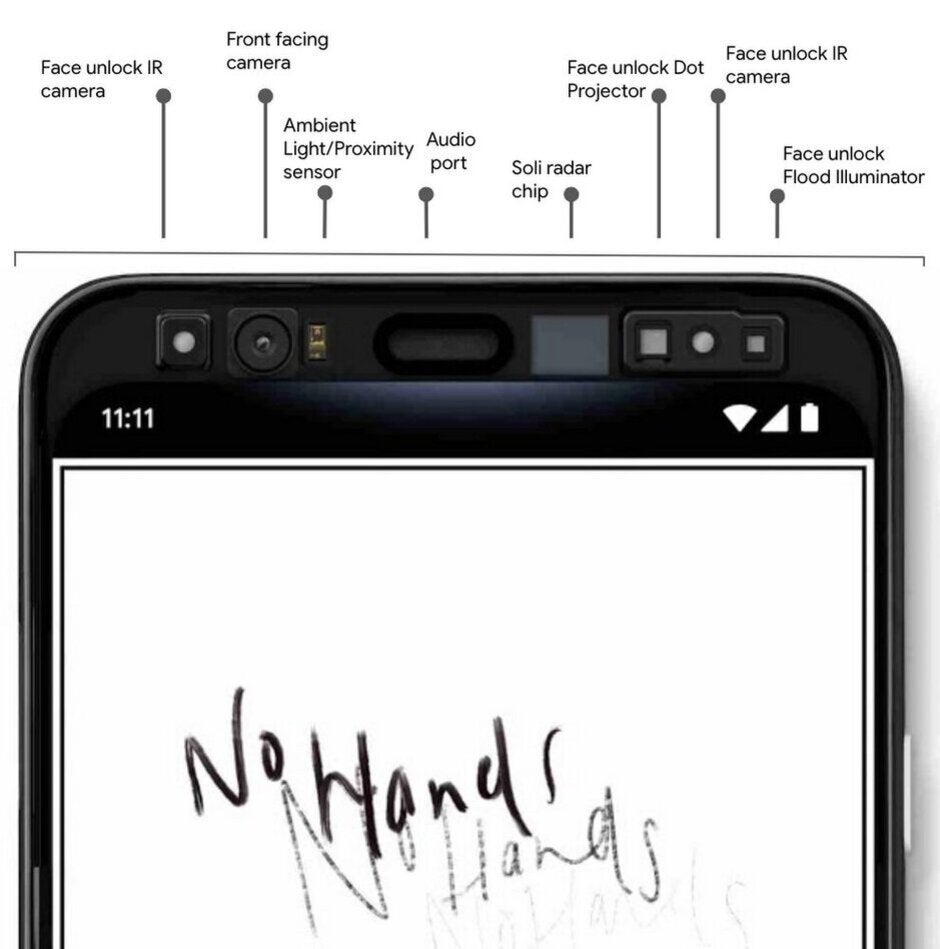The Pixel 4 Motion Sense hands-free feature will initially support nine streaming content apps

Google has already confirmed that the upcoming Pixel 4 series will have a new feature called Motion Sense that employs the company's radar-based Soli chips. A video released by the company in July showed how a wave of the hand will allow users to "skip songs" when listening to a streaming music service. In fact, Google wrote in an accompanying blog post that Motion Sense will "skip songs, snooze alarms, and silence phone calls." Google also hints that Motion Sense will gain new capabilities over time and will only be available in certain markets.
While Google hasn't revealed exactly which streaming apps will work with Motion Sense, this information was discovered by Nextrift. The latter has had in its possession a pre-production Pixel 4 XL running pre-release software and has been the source of some of the latest details pertaining to the model. Google 9to5 obtained from Nextrift a copy of the Motion Sense app and published a list of nine applications that support it. Whether this means that each of the nine merely works with Motion Sense or offers more gesture-based features than your run-of-the-mill streaming app is unknown. The list includes:
- Amazon Music
- Deezer
- Google Play Music
- iHeartRadio
- Pandora
- Spotify
- Spotify Stations
- YouTube Music
- YouTube
We will have to wait until the new phones are introduced during the Made by Google event on October 15th to find out more about Motion Sense. LG offers a similar feature on the LG G8 ThinQ called Air Motion; this uses 3D sensing in combination with hand gestures to answer calls, access certain functions, control the phone's volume, manage alarms and timers and more without having the user touch the device.
Ambient EQ automatically adjusts the display's white balance based on ambient lighting
Meanwhile, the Pixel 4 line will apparently offer just one biometric security feature, and it's not a fingerprint scanner. The more secure Face unlock will use 3D mapping to unlock the phone with a look and can be used to verify mobile payments through Google Pay. Unless Google fine-tunes the software, users will have to pick up the phone and look right at the sensors in order to unlock the handset. Apple was able to improve Face ID with the iPhone 11 series so that it will work when users look down at the phone when it is placed on a desk.

The Motion Sense and Face unlock sensors will be housed in the phone's big forehead
Both new Pixels will be powered by the Snapdragon 855 Mobile Platform, not the newer "plus" variant of the chip that not only features overclocked CPUs but also enhances the performance of the Adreno 640 graphics processor by 15%. And some are also bummed over the apparent use of the UFS 2.1 flash storage system instead of the faster UFS 3.0 being used on all of OnePlus' 2019 phones, and the Galaxy Note 10 line. Because these phones transfer data faster, they boot up faster and more importantly, they open apps faster.
Both new Pixels will add a 16MP telephoto camera (but no Ultra-wide) to the 12.2MP primary in the back. The front-facing selfie camera weighs in at 8.1MP and we should see a 2800mAh capacity battery inside the smaller unit with a 3700mAh battery keeping the Pixel 4 XL's lights on. It appears that Google will offer the phones in three colors: Just Black, Clearly White and Oh so Orange.










Things that are NOT allowed: